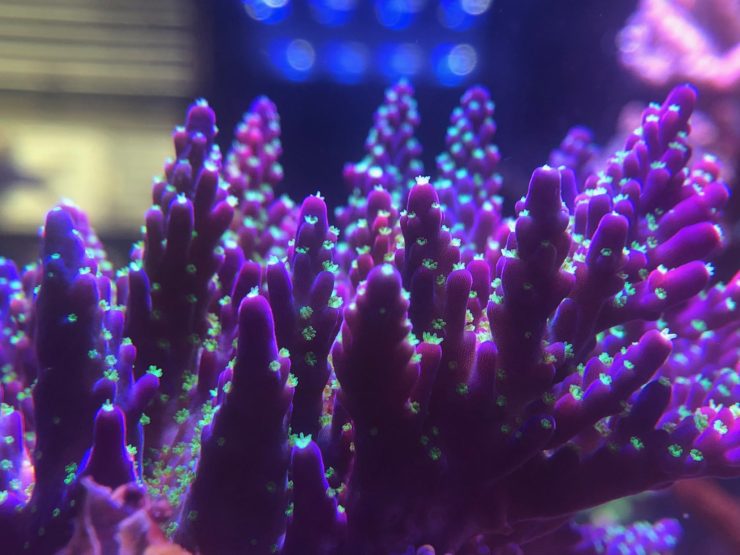
Coral Growth Rate
2020-09-10 stevenliu9
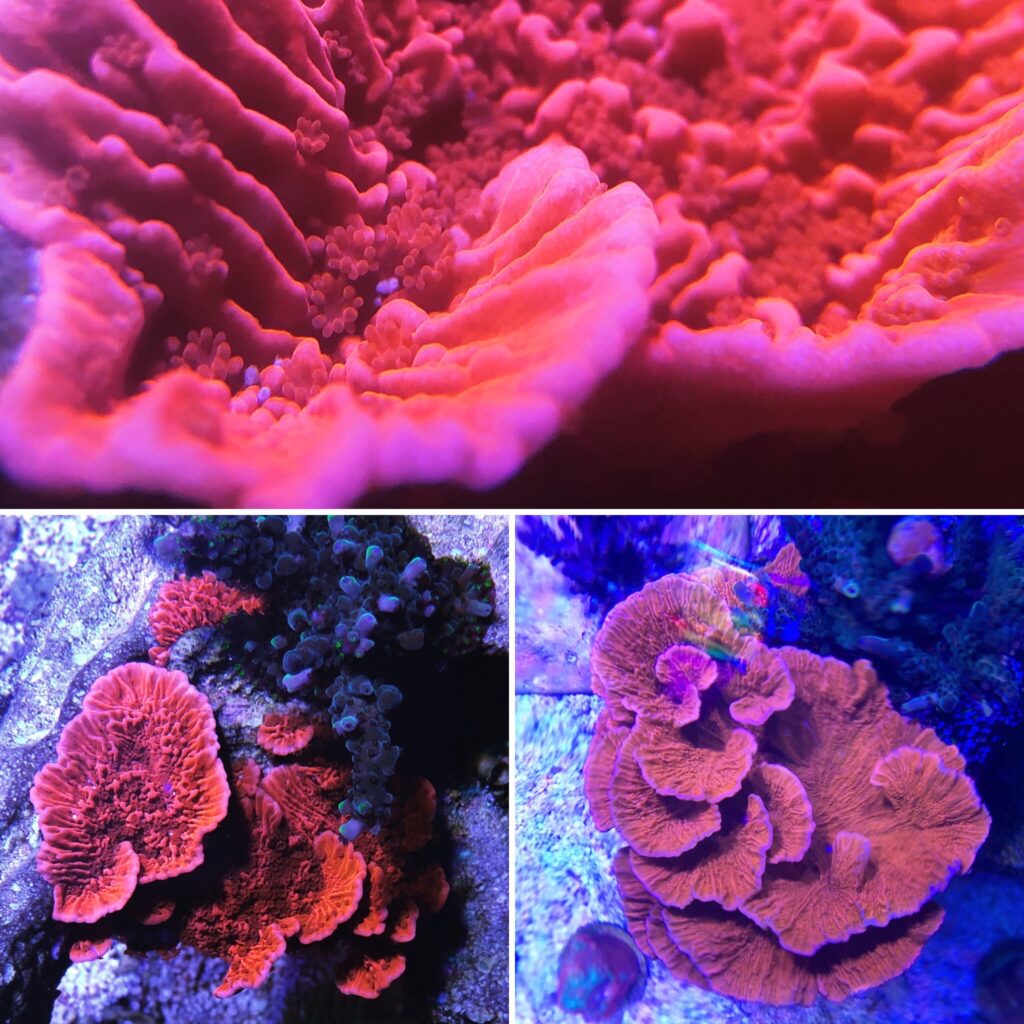
How fast do corals grow? That is a question that can draw varied opinions. First let’s touch base on the variables:
Variable 1: Types of coral
Most hobbyists like to categorize corals into three (sometimes four) groups:
- SPS- Small polyp stony corals, which consists of your typical acropora, mdntipora, stylophora, etc. They are also known as the reef builders as the majority of today’s living reef is built atop of sps skeletons. These are some of the fastest growing corals given the right condition.
- LPS- Large polyp stony corals, these are stony corals with puffy “meaty” parts. Your frogspawn, hammer, elegance, duncan, chalice, and lobo all fall into this group. They are also reef builders, but because they tend to have thicker branches, the growth rate in general is a bit slower.
- Soft corals- anything soft without skeleton, some consider mushrooms in this group but some like to separate them out. In general they are less light demanding, more tolerate in water chemistry, and actually prefer the water to be a bit “dirty” to thrive.
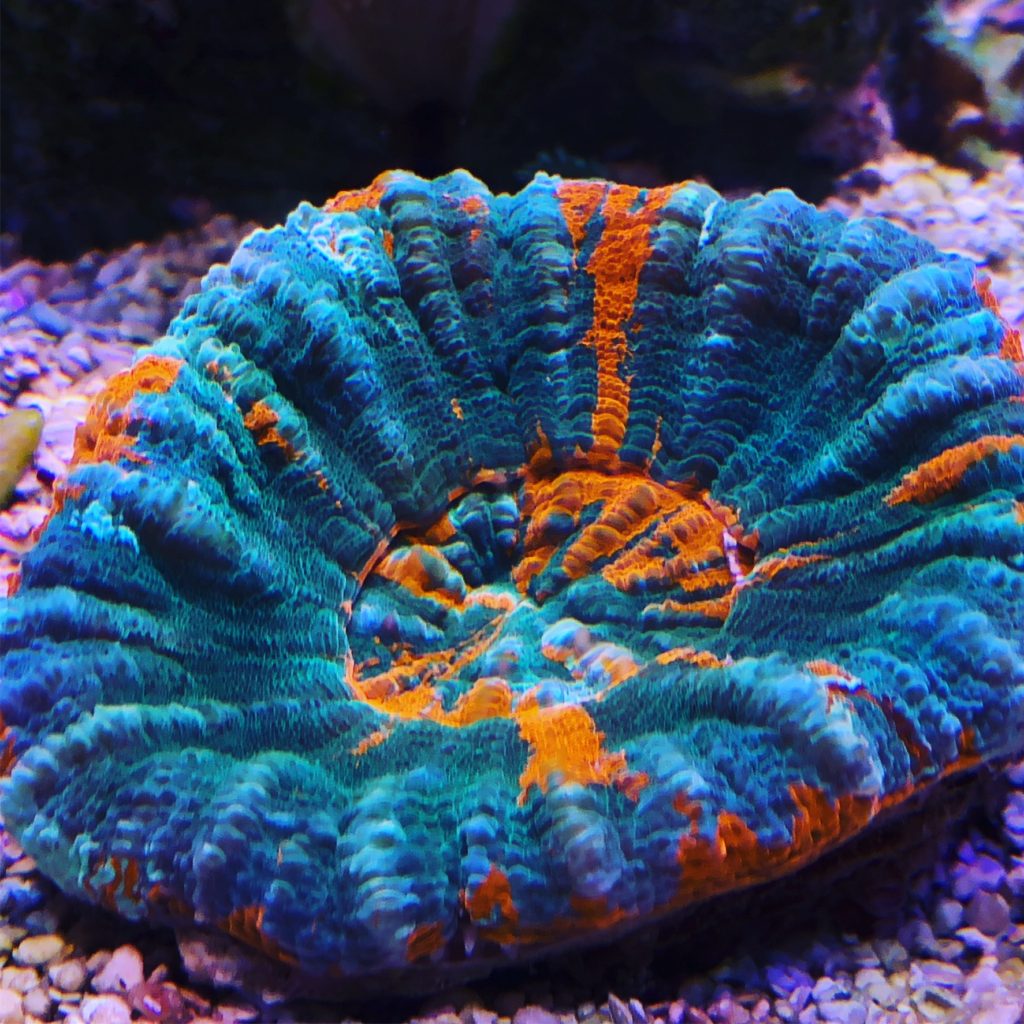
Variable 2: Elements
The elements that contributes to coral’s growth (we will strictly focus on photosynthetic ones to avoid convolution):
- Lighting- In general, more light=more growth, until it becomes to much for corals to handle and bleach out.
- Flow- Also in general, adequate flow allow the water to remain well oxygenated for healthier metabolism.
- pH- Related to the above, the better the water remains oxygenated, the water will reach a higher pH to allow better carbonate and calcium bonding in the chemical process.
- Trace element- speaking of calcium and carbonate, these are just two of the long list of elements necessary for coral development.
- Nutrition- While it is important to keep the water clean shooting for a low nitrate goal, you’d also want to make sure the water is nutritious enough for corals to capture the necessary amino acid, especially corals with larger polyp tissues to develop.
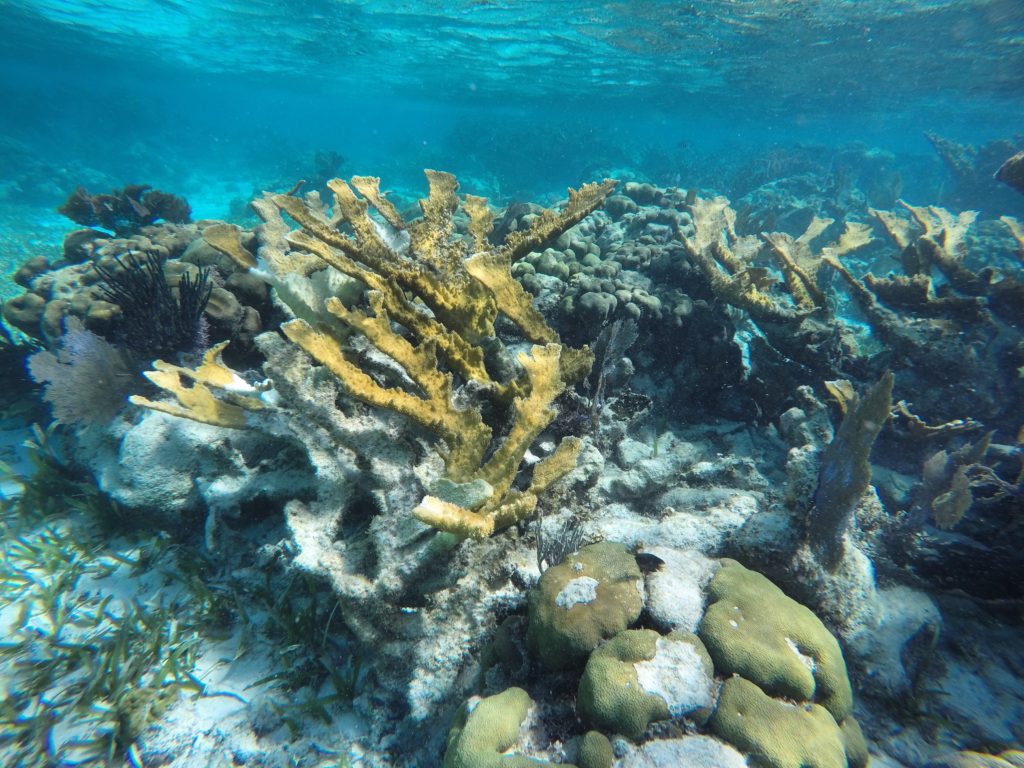
My personal tanks are located in the basement of the house with sub-par ventilation from the outside fresh air. The problem with this is that the oxygen level of the basement is constantly lower than ideal, and my tank frequently dips down in its pH levels. While there are ways I’ve found to remedy this issue, I would caution anyone who plans to set up tanks in the basement to consider ventilation.
All that said, it does appear that corals of the same species do come in different growth rates even in the same tank, under similar lighting and exact same water chemistry. My orange mdntipora for example, you’ve seen the photo when I first planted it onto the rock as a 2″x2″ frag, has grown into two separate completely jumbo colonies, with numerous fragging performed in between:
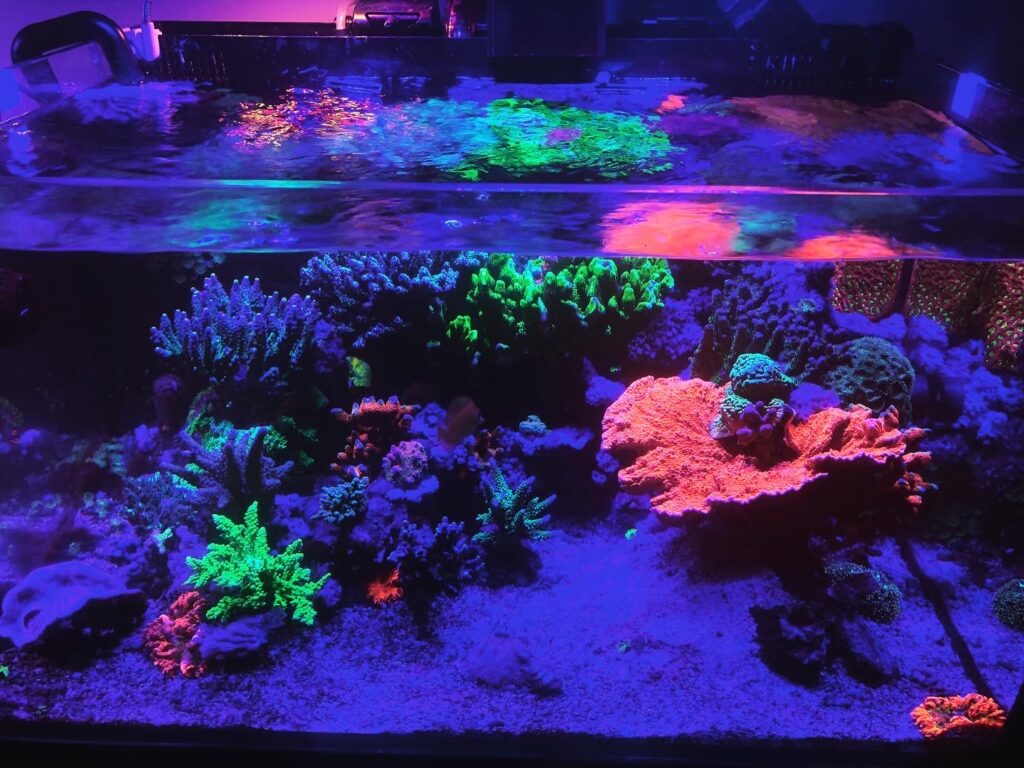
Conversely, I have had some acropora frags for over a year and it barely grown!
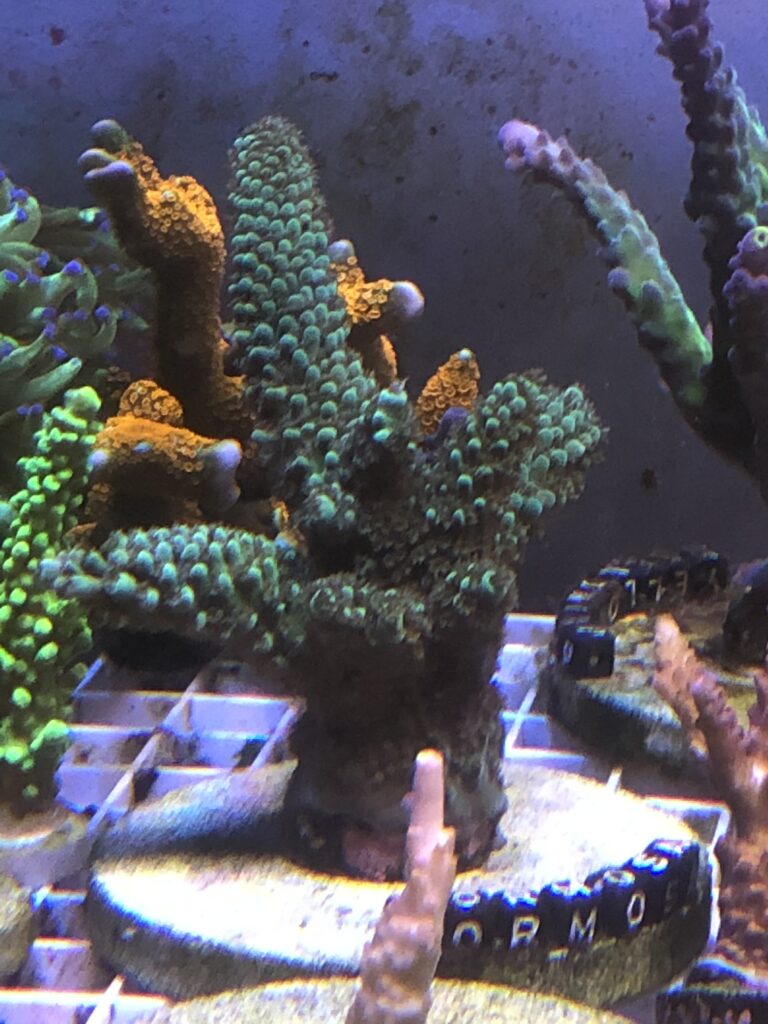
So why such disparity in the growth speed if the conditions are similar? Well, one of the answers may lie in the coral structure itself. Have you ever break off a chunk of some sps coral by accidentally grazed your pinky finger against the tip when doing some cleaning? Ever noticed those tend to also be some of the fastest growing ones?
In my persona opinion, fast growing friends like the mdntipora are very easily broken off. The bone structure tend to be brittle and very light weight when lifted off the water surface. If you look closely under a magnifying glass, the skeleton is quite porous.
Conversely, the slow growing corals, such as the acropora formosa I’ve illustrated above, along with most LPS, will require not just a bone cutter, but often times a band saw to break them off. And when holding the frags in hand, they feel like little anchors. The bones are a lot less porous, and thus less brittle to the touch. Perhaps the bone density alone is a significant factor in the different growth rate in corals.
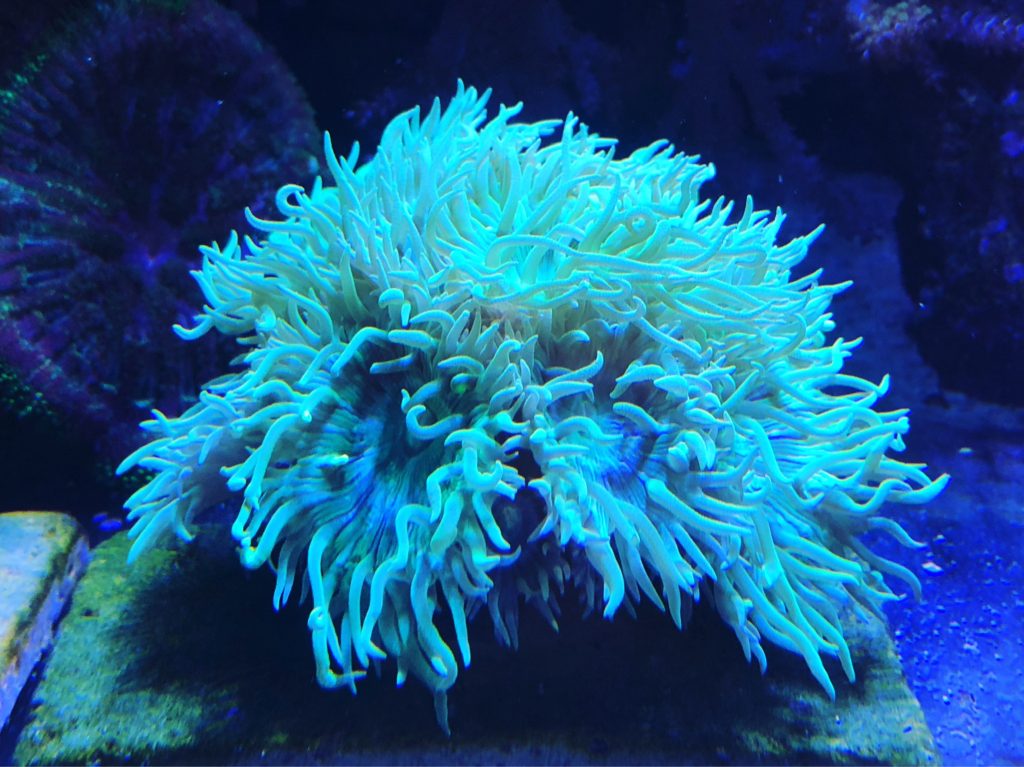
Corals color also seem to play a role into the growth rate. Those ones in bright pink, red, orange, or yellow tend to have a faster growth than the ones in cyan or blue. Perhaps this has to do with the different spectrum of lights that are allowed to penetrate the surface and to nourish the zooxanthellae reside within.
So, does anyone have some pro-tips in speeding up the coral growth?
What are your opinions on some hotly debated topics:
- Corals growth rate based on light temperature? More growth with red & white?
- Coral growth better under T-5 vs. LED?
- Dosing amino acid manually for growth?
- Extra magnesium boost growth?













